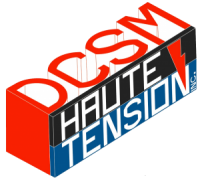Modernization of Protection Relays On Low and High Voltage.
DCSM High Voltage Inc. is able to offer its services to modernize protection relays for low and high voltage installations. It is possible to replace the old single-phase relays with new three-phase electronic relays that will meet the expectations for protection.
DCSM Haute Tension Inc. is also able to add arc flash protection relays to low, medium and high voltage equipment to comply with CSA Z462-12 for Hazard and Shock Hazard Analysis.
It should be noted that DCSM Haute Tension Inc. is also able to provide expertise in the monitoring and protection of motorized equipment through specialized electronic protection relays that currently exist on the market. These new relays make it easier to determine the origin of a problem, not only as a low and high voltage installation, but also as a protection for the driving forces necessary for the smooth running of the industry's operations.
Studying of Coordination, Short-Circuit and Flashes of Arcs.
DCSM Haute Tension Inc. is equipped with coordination study software that allows for coordination studies, verification of protection relay settings and coordination of tripping curves of circuit breakers with load switch fuses to ensure the selectivity of the protection and to protect the distribution transformers.
Thanks to this software, it is possible to obtain:
• Almost instantaneous and unlimited access to the current time curves of thousands of devices from various manufacturers;
• Coordination studies carried out rapidly in order to provide the required recommendations.
The information used to generate the protection curves is consistent with the manufacturer's data. All of the work is done by virtue of the data transmitted to us by the client. DCSM Haute Tension Inc. can provide a flash arcing hazard risk assessment to improve the overall safety program and to be able to perform work near energized equipment safely. The results of the arc flash study will categorize the approach distances according to the hazard. The study of the risk of exposure to flashes of electric arcs is a logical continuation of the studies of short circuit and coordination of overcurrent protection.

